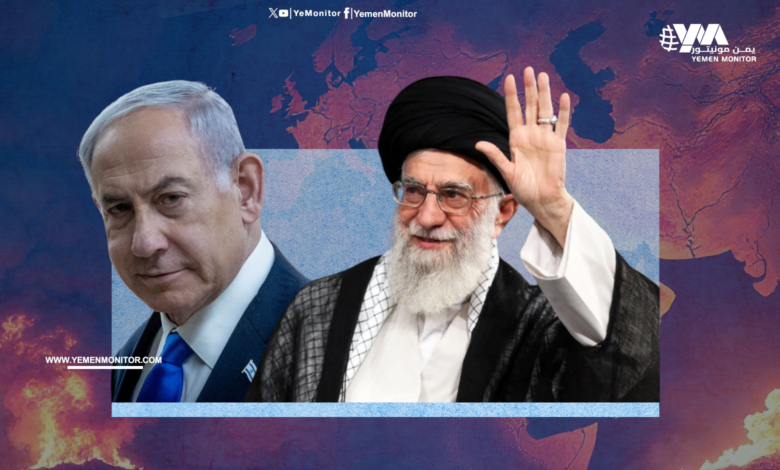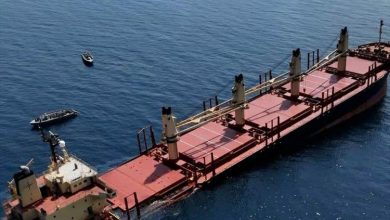Messages from the Iranian Fireball

By/Adnan Hashem
Iran’s strategy has always been to spare its country the ravages of war and destruction. However, the fireball seen over Israel serves as a “declaration of war,” especially since Netanyahu’s insistence on pushing the US toward a comprehensive regional war is more evident in Washington than in Tehran and other capitals in the region.
Regardless of the repercussions the attack left on Israeli territory, or the level of deterrence built by Iranian missiles, the audacity and significance of this action indicate that the regime in Tehran has sensed a direct threat to its national security. It has also realized the errors in its previous calculations that opened the appetite for Israel to achieve more victories toward dominance over the Middle East through terror and brute force. Netanyahu’s arrogance in power emboldened him to threaten to “change the Middle East” and the Iranian regime following the assassination of Hassan Nasrallah. This was perceived in Iran as a potential invasion threat, considering that Iran is seen as the final target in the domino effect that Israel has been knocking down since the assassination of Ismail Haniyeh in Tehran at the end of July.
The attack on the night of Tuesday, October 1, shook Israel’s image morally, not just within Israel but in most capitals in the region. It revealed that Israel is not immune to attacks that could inflict severe losses on its infrastructure; and the strategy of brutality that Israel has adopted since October 7 of last year, aimed at frightening its adversaries and Arab countries, has only resulted in greater isolation in the region, even if the normalization agreements provide it with a glimmer of hope.
Iran aimed through its significant attack on Israel to convey several messages:
The first message was directed at the Iranian public, asserting that the regime remains strong, capable of making decisive decisions, and protecting its national security. This is particularly relevant given Netanyahu’s ambitions — supported by the United States — to change the revolutionary regime, especially after the Mossad positioned itself as a force that breached the security apparatus of the Islamic Republic.
Following the assassination of Haniyeh, there were differing views among Iranian strategists on whether to retaliate against Israel or to seize the opportunity to halt the firing in Gaza and southern Lebanon. Netanyahu opted for a scorched-earth war without engagement rules, which led to Iranian attacks that confirmed that the decisions made by Khamenei and the Revolutionary Guards were correct, and that the institutions of the Supreme Leader and the Guards remain strong and will not change, even in the event of shifts in executive power.
The second message was aimed at allies, as the attack reinstates Iran as the leader of the Resistance Axis. The silence that followed the Israeli shift towards Lebanon, from the bombing of communication devices to the assassinations of Hezbollah leaders, including the Secretary-General, raised doubts among Tehran’s allies regarding its positions if they faced an Israeli attack.
Iran has consistently reiterated that its deterrence strategy relies on its allies, and that the US must pass through the “Resistance Axis” forces before reaching it. However, it suffered a significant blow last month with the assassination of Hassan Nasrallah and the ground invasion of southern Lebanon, which threatened to dismantle the “axis” that it has built over the past forty years.
The third message lies in Iran’s ability to restore deterrence. The Iranian attack demonstrated the capability to harm Israel without a nuclear program (which has always been a concern of its adversaries). It has regained a portion of the deterrence balance with the US and Israel. And it has affirmed its ability to attack Israel—or any of its adversaries—despite all the US fleets and military bases in the region. It has also asserted its ability to repeat such actions if the Israeli occupation continues to undermine its allies in the region, with greater and more painful consequences.
Iran has also made it clear to Washington that its vision for the Middle East is fundamentally different from Iran’s, and that its policies add further complications to the negotiations for a “nuclear deal.”
The Iranian fireball hovering over the occupied territories reminds the world of the fundamental question: Will we witness a regional war?! And with it, economic and political repercussions.
The matter now hinges on Netanyahu’s response to Iran, as Galant stated following the attack, “It’s either us, or them.” And on the occupation’s ability to compel the US to launch a devastating blow against Tehran that could cross the two red lines of “regime survival and the nuclear program.” This would ignite a regional war in which Iran has the capability to close international trade routes, in a war that extends from the Indian Ocean to the Mediterranean Sea. And this would not be possible without Russia’s pledge to support Iran militarily and politically.
****
Iran does not want a war. Its decision-makers are aware of its dangers to their country. The mindset of the society is still haunted by the eight-year war with Iraq and the neighboring wars in Iraq and Afghanistan. Nevertheless, the ‘Operation Tophan Al-Aqsa ‘ – which is nearing its first anniversary – has redrawn the region’s strategies and its future. It is likely that the Iranian Supreme National Security Council has redrawn its strategic priorities for national security.
Ultimately, it is unfortunate that the Arab world is far from shaping the region’s policy, lacking a unified strategy to confront what is happening. Although any war between Israel and Iran would be at the expense of the Arab world, which has stood by as a spectator to all these events leading to the emergence of a new power in the region, neither of which is in the interest of our national security.





